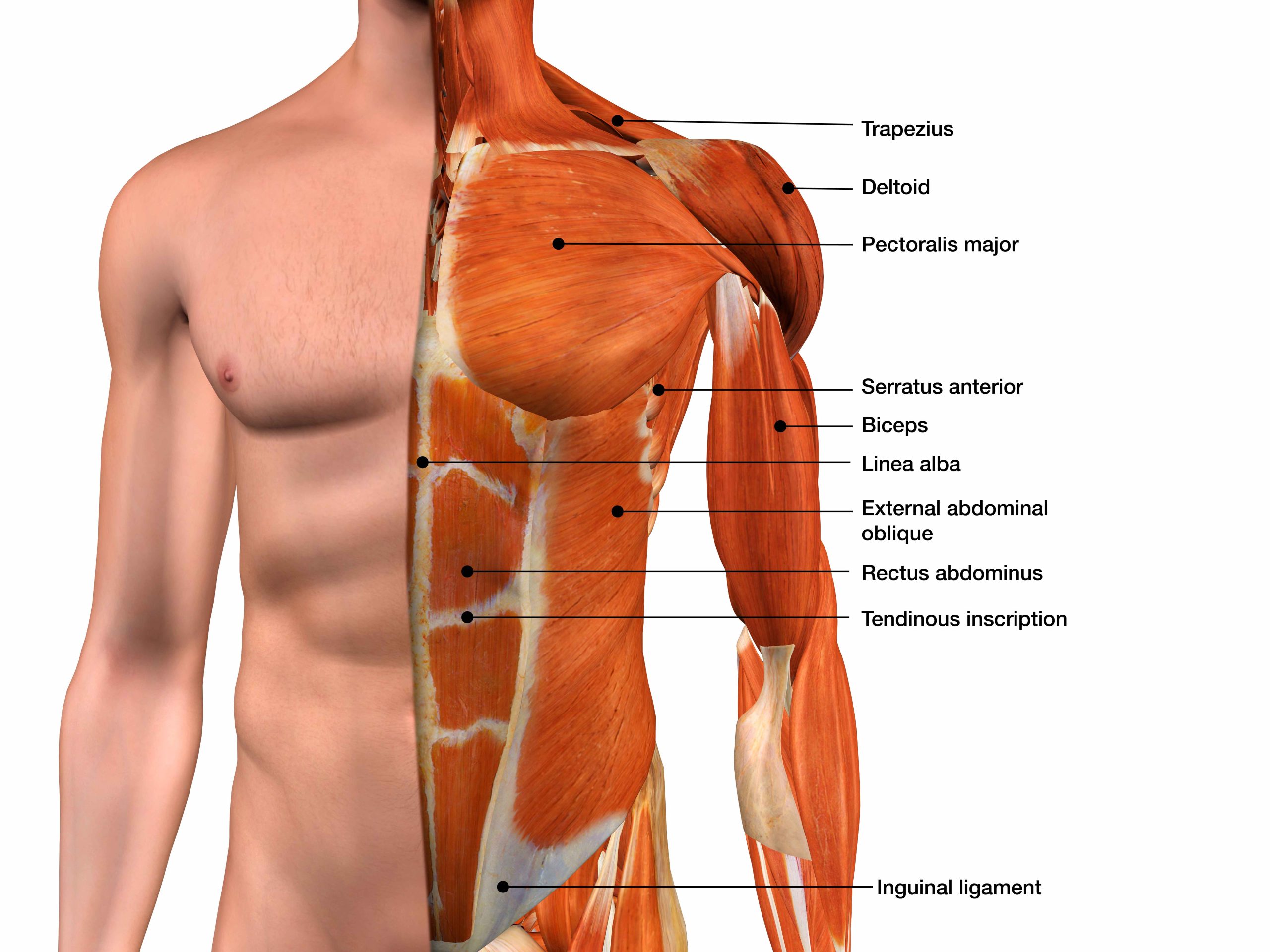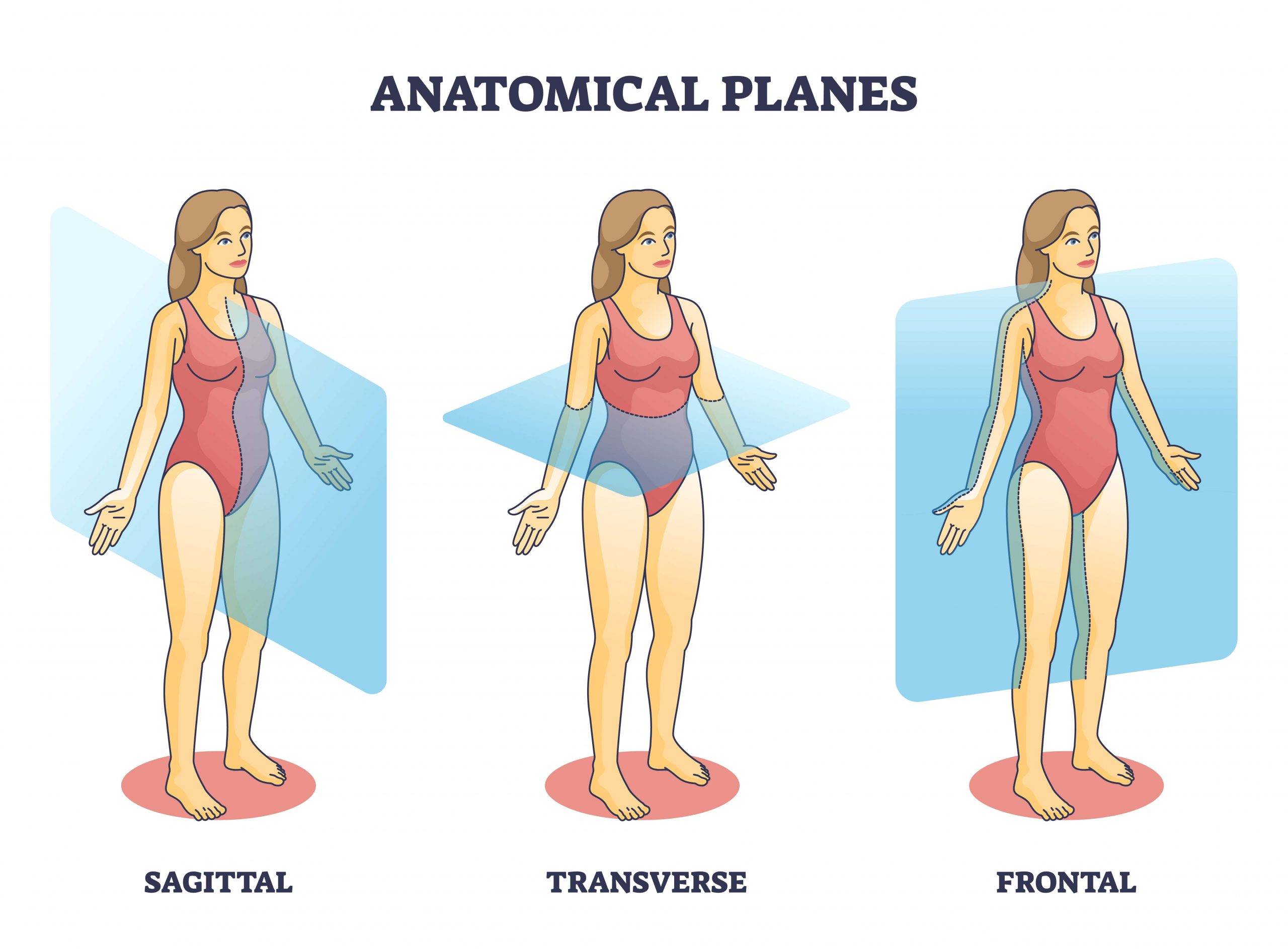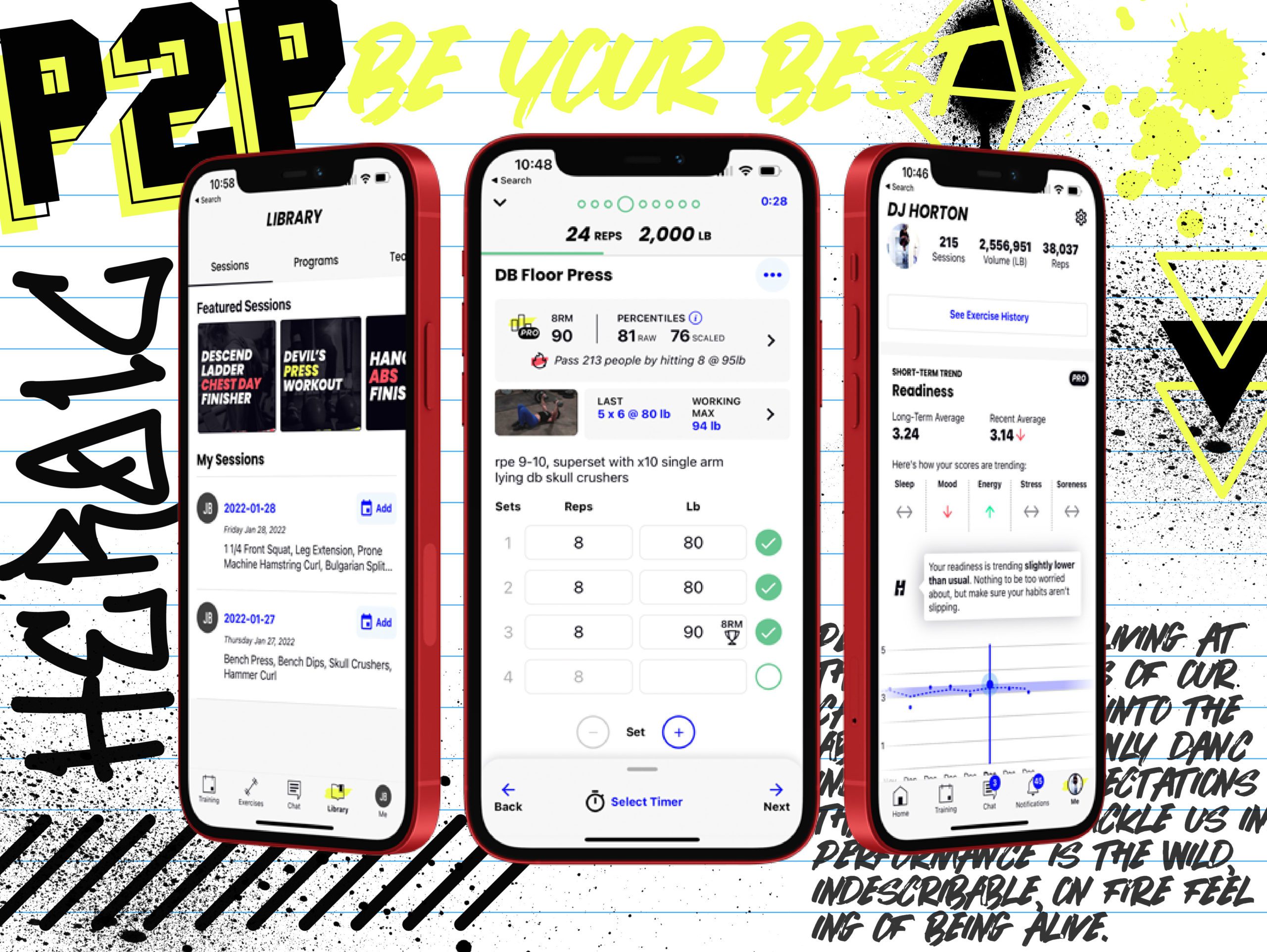5 Ab Exercises Every Athlete Should Do More

We know the usual suspects for ab work: sit ups, crunches, toes-to-bar, leg raises, etc. But if you’ve ever felt your ab training was lagging (or just boring), you’re probably missing out on some key ingredients to total trunk strength.
Brandon Robb is the founder and head coach of HEROIC Athletics @heroic.athletics and Golf HEROIC @golf.heroic—he’s worked with athletes for over a decade. First responders (fire, police, military), golfers, Crossfitters, obstacle course racers, and hockey players all turn to him for performance gains, injury prevention, and competition prep.
In this blog he outlines your core anatomy and the planes of motion in which our bodies operate. He then breaks down five exercises most athletes need to do more often to get a bulletproof core: supermans, KB teapots, lunge banded rotations, Pallof presses, and deadbugs.

Because You Need a Bulletproof Core
You don’t have to scroll very long through your feed to see the headlines: “do these six moves for a six pack” or “get a six pack in 8 weeks following my program”. While some of these influencers are well intended, most of the time it’s simply to hook you into purchasing something from them. Results may vary.
We almost can’t blame them. This is the same dump truck of over-promising in the fitness industry that I myself was raised on. As a young athlete, I bought all the magazines that promised a more chiseled chest or some way to turn my baby keg into a six pack.
These days, performance is finally getting more attention alongside the vanity of working out. Whether you’re an aspiring professional athlete, a weekend warrior, or simply refuse to let your 9-year-old school your ass on the playground, the focus on physical performance has become more mainstream over the last 5-10 years.
But there’s a common problem when it comes to core strength. Many “performance focused” trainers still invest a lot of time into the same movement: the sit up.
Now don’t get me wrong, I have nothing against sit ups. But most ab exercises you see programmed are just variations of the sit up: crunches, toes to bar, leg raises, and GHD sit ups all share the same movement pattern with just a slight difference in set up or equipment. These are all variations of trunk/core flexion.
Again, it’s a proven movement, but if all you focus on is flexion, you’ll eventually see a lag in progress. Plus, neglecting a more well-rounded training regimen in favor of working on your “show” muscles often leads to preventable injuries, like low back pain.
In university I was taught to refer to the midline as the trunk. Most people like to train the visible part of their trunk (assuming good nutrition protocols), focusing on the rectus abdominis aka six-pack. But the space between your ribcage and your pelvis is made up of much more than just those 6 muscles that pop out on a magazine cover.
Core Anatomy

Let’s break down some key muscles that make up your trunk.
Front
- Rectus Abdominis (your six pack)
- Transverse Abdominis (layer of muscle UNDER your six pack)
Side
- Internal & External Oblique (often referred to as “love handles”)
Back
- Quadratus Lumborum (deepest trunk muscle)
- Thoracolumbar Fascia
- Erector Spinae
- Serratus Posterior
Hip (yes, hip anatomy works in conjunction with the rest of the trunk)
- Gluteus Maximus
- Gluteus Medius
- Gluteus Minimus
- Iliacus
- Psoas
- Tensor Fasciae Latae
- Sartorius
- Rectus Femoris
- Adductor Group of Muscles
The issue with doing JUST sit ups (and its variations) is that athletes are biasing one muscle group, the rectus abdominis, and one plane of motion, sagittal (forward and back/up and down).
When training your trunk as an athlete, it’s important to understand both planes of motion and movement categories. Because sport and life don’t happen in a cardboard box—humans aren’t bound to moving just forward and backward like cars or robots.
We twist, turn, jump, shimmy sideways, lean back, lean forward, and combine these movements in a ton of different patterns. Understanding how to break these movements down is essential to your overall athleticism.
You Work too Hard to Not See Progress
Find Your Perfect Training Plan
Options for Every Goal
Training plans from real coaches covering any goal, fitness level, and number of sessions per week.
The Best Coaches
Get coached by the best. Olympians, ex-NFL stars, Titan Games Winners, Sport Scientists and more.
Starting at $1/ day
With many options including a free 7 day trial, you can try out programming before you commit.
Understanding Planes of Motion

Sagittal plane movements involve forward/backward and up/down motions.
Frontal plane movements involve moving side to side.
Transverse plane movements involve rotating and twisting.
Training is supposed to help you perform better in sport and life. To that end, it’s important to incorporate movements that go beyond doing sit ups in the sagittal plane.
Movement Categories & Ab Exercises
To really drive the point home, here are 5 categories of movement with example movements and a breakdown of execution for each.
Category 1: Flexion & Extension
We know the flexion part, which is a sit up and all its variations, but it’s only one half of this category. Trunk extension is important too, as this helps build strength in the low back, glutes and hip structure.
Movement: Superman
Lie face down (prone) on the floor with your arms extended above or beside you and your legs extended long. Take a big breath in. Focus on activating your glutes and your low back as you lift your arms, legs, chest, and upper thighs off the floor. Hold for 3-5 seconds per rep and slowly lower your limbs back down.
Muscles Worked
- Gluteus Maximus
- Thoracolumbar Fascia
- Erector Spinae
Variations
- GHD Hip Extensions
- Ironmans
- Single Leg Supermans
Category 2: Lateral Flexion & Extension
It’s important to understand that flexion and extension don’t always happen in the sagittal plane, but side to side as well—especially in sports. Athletes should aim to build stability and power in these often overlooked directions.
Movement: KB/DB Teapots
Stand with your feet around shoulder-width apart, toes pointing forward. Hold a kettlebell or dumbbell in one hand down at your hip. Place your other hand beside your head with your fingers just behind your ear (looking like a teapot).
Slowly lower the weight toward the floor by bending sideways, ensuring that you’re moving directly sideways under control without leaning forward or backward. Once you reach the furthest depth to the side as you can, pause for a count. Contract your obliques on the opposite side of your body to come back up.
Muscles Worked
- Obliques
- Quadratus Lumborum
Variations
- Single Leg or Staggered Stance Teapots
- Bodyweight Lateral Raise
- QL Lateral Raise with a Barbell
Level Up Your Training
With TrainHeroic’s immersive training app
TrainHeroic does everything you wish your old gym notebook could do.
Take the guesswork out of training with built-in exercise instruction and basic training programs. Compete against yourself and others. Track your performance and readiness. Smash your goals.

Category 3: Rotation
Rotation is easy to forget about in many training environments. Russian twists are one of the only common rotation exercises. While this is better than no rotation training at all, there are other options for rotational movements.
Below I break down one of MY favorite rotation movements: the ISO lunge banded rotation. This exercise is incredibly helpful for building stability in rotation while in a staggered stance. Think of a receiver catching a football or a college bro catching a frisbee on the run. Twisting your trunk while mid-stride is a potentially compromising position if you don’t train it. Want to improve your golf swing? Work on your core rotation.
Movement: Isometric Lunge Banded Rotation
Attach a band to a post or rig. Step away from the post so there’s tension in the band and stand facing to the left or right of the rig. Take one large step back with your inside leg and dig your big toe into the ground so you’re set up in a ¾ lunge position.
Holding the band with outstretched arms, rotate your torso to pull the band from one side of your body to the other. Focus on engaging your trunk/abs the entire time. Pause at the end range of the movement, then control the band back to the start position (don’t let the band snap you back to the beginning).
Coach’s Tip: Allow your head to follow your torso instead of keeping your gaze straight ahead.
Muscles Worked
- Internal & External Obliques
- Transverse Abdominis
- Rectus Abdominis
Variations
- Russian Twists
- Rotational Medicine Ball Throws
- Cable/Banded Chop
Category 4: Anti-Rotation
Anti-rotation is just like it sounds—not rotating. It’s the exact opposite of rotational type movements, so you’re holding your position steady against the resistance instead of moving with it. These exercises help athletes develop stability when outside forces, like an object or a competitor, try to pull you out of position.
Movement: Pallof Press
Setup is similar to the lunge rotation: Attach a band to a post or rig, then step away from the post so there’s tension in the band and stand facing to the left or right of the rig.
With your posture tall and shoulders away from your ears, hold the band taut at your chest. Slowly and with extreme control, extend your arms forward. The further away from your body your arms get, the more you should feel your trunk/abs engage. Keep this one simple. Avoid the temptation to deviate away from pressing the band straight forward and pulling it back into your chest.
Muscles Worked
- Transverse Abdominis
- Internal & External Obliques
- Hip Structure
Variations
- Pallof Press Squat
- Landmine Anti-Rotations
- Renegade Rows
Category 5: Bracing
Bracing is one core exercise that you see usually in the form of plank holds. Planks are fine, but they neglect the fact that the athlete needs to learn how to move their limbs while maintaining a stable trunk. The exercise below is a staple in ALL of my athletes’ programs, and it’s known as a secret weapon to avoiding low back pain.
Movement: Deadbug
Lie on your back, arms extended straight out in front of you with your hands toward the ceiling. Bring your legs up to a 90° angle so your feet face the opposite wall (for a harder version, you can start with legs straight up to the ceiling).
Keep your spine neutral—don’t arch or tuck excessively. Slowly lower both your right arm and left leg at the same time toward the ground. Use a count of 3-5 seconds to lower, pause at the bottom, then slowly raise them back up to the start position. Repeat for your left arm and right leg.
Coach’s Tip: Only lower your arm and leg as low as you can without allowing your low back to arch or “lift” off the floor.
Muscles Worked
- Transverse Abdominis
- Hip Structure
Variations
- Legs Only Dead Bug
- Arms Only Dead Bug
- Banded Dead Bug
Incorporating these movements into your training will not only help build that solid six pack, but will have much more carry over to your chosen sports and activities. From a general standpoint, I will include all of these movement types and their variations on a weekly basis. Dead bugs often will show up 2-3 times per week in many of my programs.
If you want to build a strong, usable trunk for sports and life, do more than just sit ups.
Want Training Tips, Exercise Guides & Knowledge Bombs Sent to Your Inbox?
Sign up for the FitNerd newsletter from TrainHeroic
Related articles
3 Ways to Improve Mobility Without Stretching
Are you still trying the endless foam rolling and stretching exercises to get that deep squat position? We know how important mobility is for great, or even GOOD performance. All professional athletes have some comfortability in end ranges of motion. So, what else do...
The Ultimate Guide to Lunges: Queen of all Glute Exercises
Your glutes are the largest muscle group in your body. They’re responsible for almost everything your legs do—walking, running, jumping, squatting, lunging, and just standing upright. As far as moving through space goes, strong glutes are the bedrock of overall...
A Beginner’s Guide to Steel Mace Training
Author: Jesse Grund
Mace training will make you a better mover without it’s not confining you to a fixed space or predetermined range of motion. Second, it’s an offset load with 80 to 90 percent of the weight in the head. You’re also constantly having to resist rotation, which creates greater core engagement.

Join the community
Sign up for the latest training news and updates from TrainHeroic

About TrainHeroic
Support
Made with love, sweat, protein isolate and hard work in Denver, CO
© 2021 TrainHeroic, Inc. All rights reserved.





